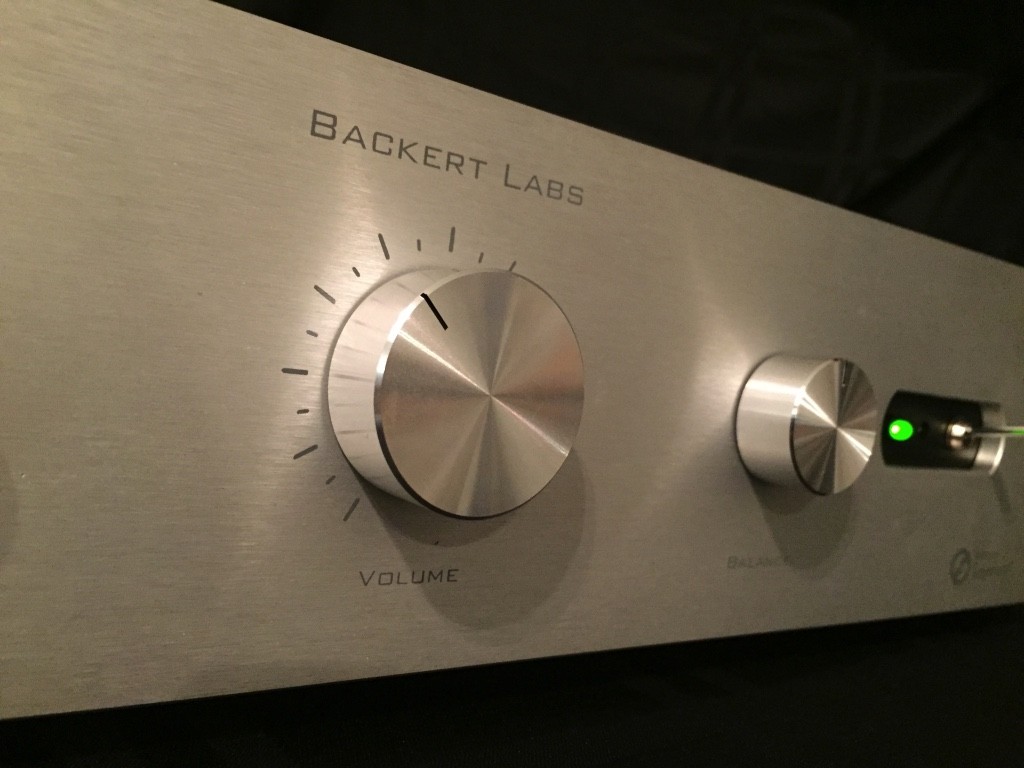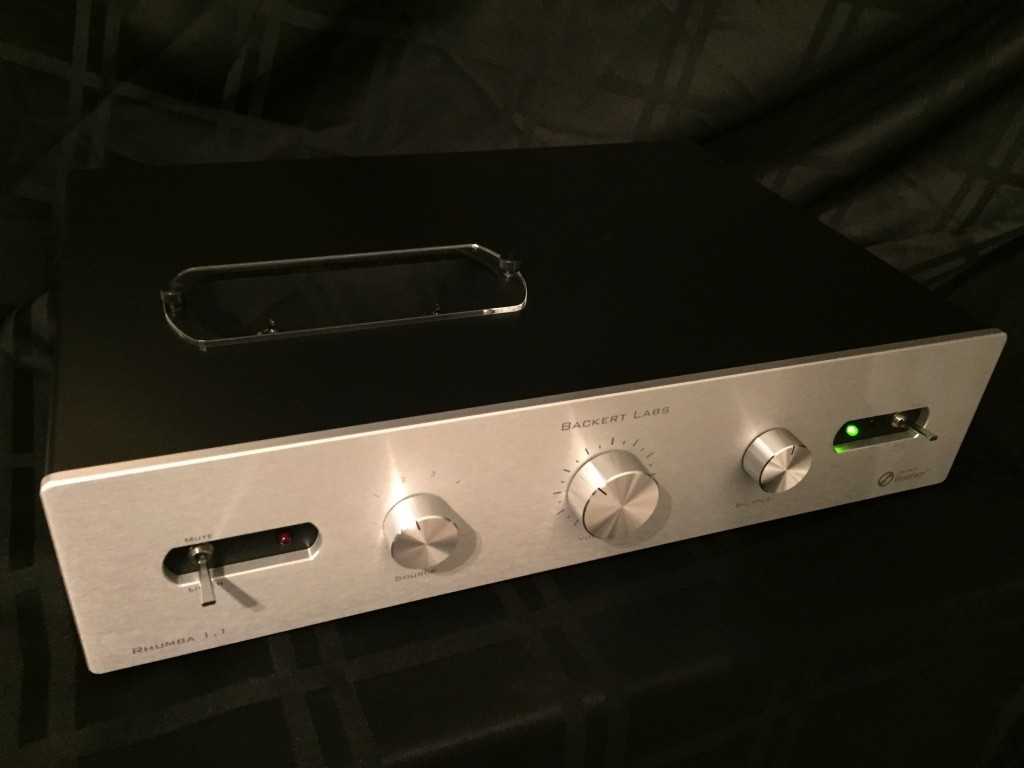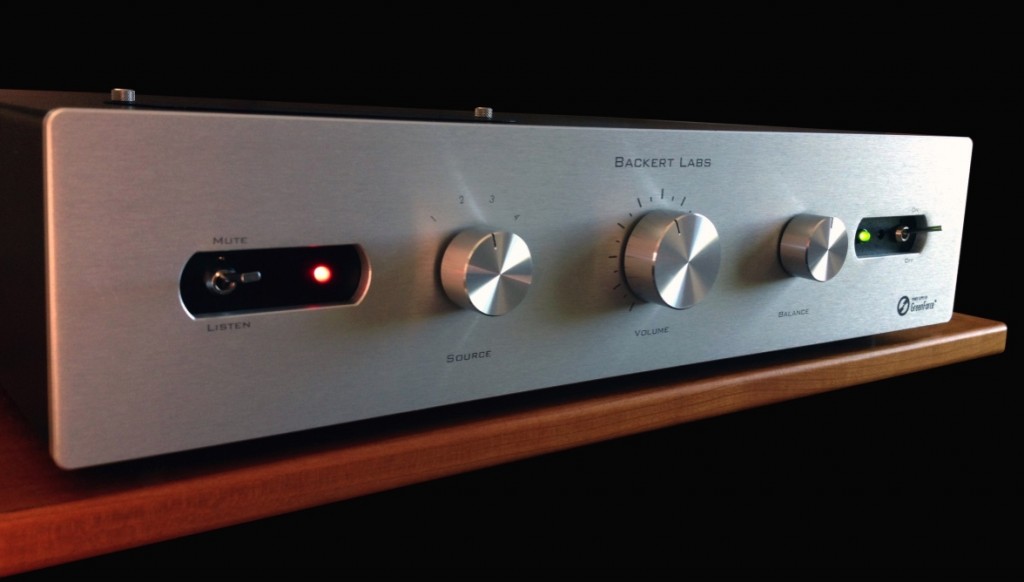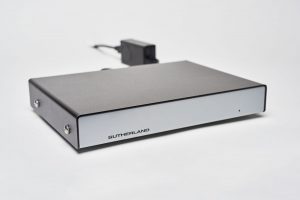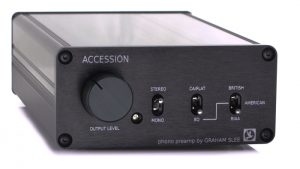I reviewed the first product from Delaware-based Backert Labs, the Rhythm 1.1 Linestage, over a year ago in Issue 76 (HERE). I thought designer and preamp specialist Bob Backert hit a home run with this well-built and innovative design, especially if musical enjoyment is your main priority. The Rhythm 1.1 achieves its sterling sound by paying special attention to power supply design and capacitor selection in a unique circuit arrangement. It costs $7500 (available from select dealers and by mail order from www.backertlabs.com), which is not cheap but certainly far from the loftiest heights of audio prices, yet it plays competitively with preamps costing twice as much. For its newest linestage preamp product Backert Labs decided to move down in price by more than half (to an introductory $2995) while offering as much of the performance of its senior sibling as possible. They have succeeded remarkably well. There are dozens of preamps in the $3000 price range, but the Rhumba 1.1 should be near the top of your audition list if you're in the market.
The Rhumba 1.1, like its costlier stable-mate, is a single-ended design that uses two 12AU7 tubes for amplification. It has no cathode follower stage, which means the preamp inverts phase. The positive and negative leads to your speakers should be reversed to compensate. The Rhumba uses Backert's patented GreenForce™ power supply design and eschews electrolytic capacitors in favor of polypropylene types that are friendlier to the music. The GreenForce™ supply gives the Rhumba is rhythm and drive, according to Backert, and the other capacitor choices enhances its transparency and image stability. Backert uses circuit design and layout techniques he's perfected during many years of upgrading tube preamp designs from other well-known manufacturers. The chassis work is clean and professional, but not over the top (which would greatly increase cost) so it does benefit from aftermarket vibration and damping widgets. The front panel is beautifully machined here in the USA (the entire unit is built in Pennsylvania) and looks well worth the price. In fact, the chassis is not much different than that of the more expensive Rhythm 1.1 linestage. The tubes are easily accessible under a clear acrylic cover on the top of the chassis (also giving the Rhumba a pleasant glow when the lights are low). This invites tube rolling, but I was so happy with the sound using the stock tubes I was not tempted to play with them. The supplied tubes are from JJ Electronics and have tube dampers. Compared to the earlier Backert Labs model, the Rhumba adds an XLR input and output to its 3 RCA inputs and 2 RCA outputs. There is also a home theater bypass mode. The Rhumba is not a balanced design but the XLR inputs and outputs allow those users who like or need to use balanced cables (like me) to integrate the Rhumba easily. Thank you Backert Labs! In many ways the Rhumba reminds me of the old Audible Illusions Modulus III preamp I owned for many years. I finally sold that unit, despite its good sound, because I got tired of getting up from the couch to adjust the two volume controls for level and balance. The Rhumba has a single high-quality ALPS volume control, a TKD balance control, and an elegant yet simple remote to raise and lower the volume. (The Audible Illusions preamp is still available for about $3700 in its latest incarnation).
The Rhumba is a very well put together piece of electronics and it looks terrific. All internal wiring is with Kimber Kable. On the left of the front panel lie a single toggle switch and a light that indicate operation of the mute function. When the unit is first switched on the output is muted and this light is red. After a short delay the light goes out and the preamp comes alive. The on-off toggle switch is on the right side of the front panel together with its own light that turns green when the unit is on. In the center of the front panel is the large volume knob flanked by an ELMA input selector switch and the balance control with center détente.
The rear panel sports the balanced XLR input (input 1) on the right, followed by seven pairs of gold-plated RCA jacks corresponding to inputs 2, 3, 4, home theater, record out, and outputs 1 and 2. The final sets of jacks are the XLR outputs. An IEC plug for the AC cord is also present. The home theater jacks come with shorting plugs inserted. Everything about the appearance and construction of the Rhumba is impeccable.
The Rhumba has a specified frequency response flat from 3 Hz and down by 3dB at 320kHz. It is very quiet with a 98dB signal-to-noise ratio. The gain is relatively low at 9dB but this was not an issue with any of the equipment I used. Input impedance is 55Kohms and output impedance is 150ohms. It weighs 22 lbs.
I installed the Rhumba 1.1 in my system consisting of the Townshend Rock 7 Turntable with Helius Omega arm and the London Reference cartridge, E.A.R. 868 preamp (used only as a phono stage for this review), the E.A.R. Acute 3 CD player/DAC, and the E.A.R. 890 power amp. Speakers were the Marten Django XLs. All interconnect cables used for the auditioning were Kubala-Sosna Elation and speaker cables were Kubala-Sosna Emotion. Each pair of the Elation cables I used cost more than the entire Backert Labs preamp, so this combination is not likely for most users, but I am comfortable in saying these cables bring out the best sound of which most electronics are capable. I did try swapping between balanced and unbalanced cables but I did not notice a consistent difference between the two. Most of my listening was done with 4m balanced cables between the preamp and power amp and 1m single-ended or balanced cables from the source component to the preamp.
As for power cords, my system uses a combination of Kubala-Sosna Emotion, Harmonic Technology, and Inex Innovation power cables. For my first few days with the Rhumba I used the stock power cord, a Home Depot special. The sound was quite good, but improved in most ways when I substituted an Inex Innovation 3D Creator AC Power Cord. See below. The Rhumba sat on a Target stand for my listening tests. I tried several isolation devices underneath; of which, most of which had a positive impact. The chassis and vibration control used in the stock Rhumba is not as heroic as in some other much more expensive designs, but this makes sense given the price point. I got the best sound with the Rhumba sitting on a Townsend Seismic isolation platform.
When I first started listening to the Rhumba, using some of the same test CDs I used to evaluate the Rhythm 1.1 a year earlier, I was happy right away, but not as impressed as I remembered with the Rhythm. I did not have the Rhythm available to make a direct comparison, and it has been a long time with some other small system changes in the interim. However, the Rhumba had more than a familial similarity to the outstanding Rhythm in its speed, dynamics, and rhythmic drive that had been hard to forget with the more expensive unit. The Rhumba immediately drew you into the music with its sense of aliveness, openness, detail, and smoothness. It allowed you to discern different musical lines and the character of instruments just short of the best I've heard. I also noticed really powerful, dynamic bass, a sweet, slightly mellow midrange, and extended, clear high end. Like the Rhythm, the Rhumba presented very solid spatial images where instruments and sounds were distinctly placed in 3-dimentional space and stayed put as they played up and down their scales. Dynamics were outstanding, and dynamic nuances at low volume levels was also exemplary. Unlike some other preamps in this price range and below the Rhumba was extremely transparent from top to bottom. No veils, smears, or grunge that I could hear. I tried a large variety of music to expose possible faults including solo instruments, small ensembles, male and female vocals, small and large orchestras, even electronic music. The Rhumba is one of those preamps that sounds like real music sounds and this is obvious to both trained and untrained listeners.
Backert's preamp designs focus on timing, phase linearity, and dynamics and in these characteristics the Rhumba excels. I think this is why music sounds so true on the Rhumba. On the other hand the tonality of this linestage is also spot on, especially through the midrange. This was most evident while listening to vocals both male and female. In listening closely to various songs I could hear and understand the words very clearly and I could almost “see” the words being formed and the air moving through vocal cords and lips. The Rhumba was also great in playing music by small musical ensembles, either jazz or classical, with the appropriate weight and body with no sacrifice in detail. In good recordings (especially vinyl) the Rhumba provided an appealing sense of size and space. In large scale works and even driving rock recordings, the Rhumba never ran out of steam or lost any of its sense of scale and pace. These are all things that only the best preamps do well.
I got most of these impressions in my first week of listening, but after a while there were two things that came to bother me about the Rhumba's sound. First, there was a little too much bass and as the scale went lower in frequency bass definition suffered a bit. At the opposite end of the spectrum I thought transparency at upper frequencies was not as good as in the midrange. I initially assumed these were necessary artifacts of trying to meet the Rhumba's price point so I wasn't too surprised. But then, I decided to change power cords. I had been using the stock power cord with the Rhumba for the first few days of extended listening. When I substituted the Inex Innovation 3D Creator AC power cord (about $1200 for 5 ft.) these artifacts disappeared. That is, the bass became much better controlled and lacking in any bloat. And, the high end came up to par with the rest of the frequency range. On the other hand, the soundstage came forward a row or two and images flattened a little bit. The Inex power cord includes a proprietary in-line filter that lowers the noise floor (almost like having a power conditioner right in the power cord). I imagine this is why the high and low ends both became cleaner. I did not play around further with other power cords but my experience is enough for me to recommend that if you buy this preamp you ditch the stock power cord and try out some alternatives.
Now properly equipped with an improved power cord, and sitting on top of the Townshend vibration isolation base the Rhumba became an even more wonderful performer that gave me many thrilling moments during several weeks of auditioning. It never took more than five or ten minutes to warm up and come up to full performance level, and that level was very high. I hardly missed my reference E.A.R. 868 at all. I consider the Rhumba 1.1 to be a real find in the $3000 price range for preamps. I haven't heard them all by any means, but this has to be among the top candidates. I only wish it included a phono stage. The Rhumba 1.1 and its grander sibling, the Rhythm 1.1, are available through their web site with a 30-day trial period with a full refund guarantee. Backert Labs preamps can also be purchased from The Cable Company on the net and via some dealers in the Philadelphia area. Please try it. You may be able to save yourself some money if you are looking for a top performing linestage preamp at a reasonable price.
Backert Labs Rhumba 1.1 Line Stage
Introductory Retail: $2995
Backert Labs
501 Gibben Rd.
Hockessin, DE 19707
(302) 723-7549
Contact Andy Tebbe, President
(302) 723-7549




